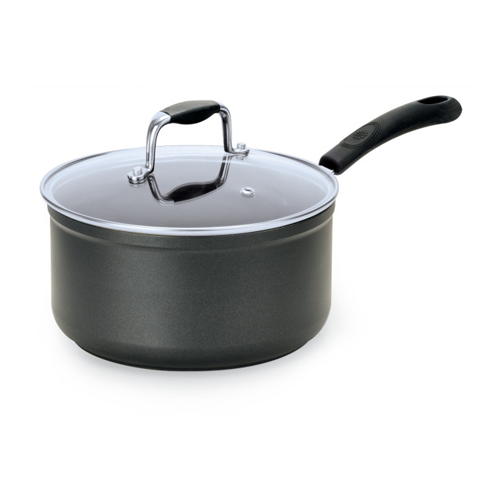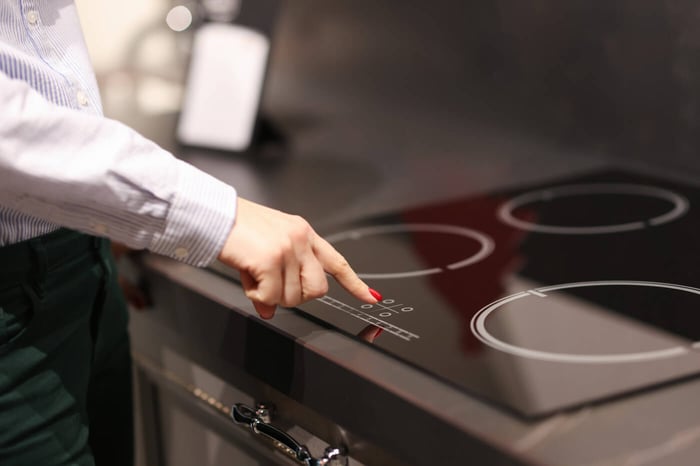Induction cooktops are lauded for their efficiency and safety. Unlike traditional gas or electric ranges, they heat cookware directly through magnetic coils, minimizing wasted energy and keeping your kitchen cooler. However, to reap the benefits of induction cooking, you need compatible cookware. Saucepans are essential tools for any kitchen, so finding the right saucepan for induction cooktops requires a bit more consideration than just size and style.
This comprehensive guide will delve into everything you need to know about saucepans for induction cooktops, empowering you to make an informed decision.
What Makes a Saucepan for Induction Cooktops Compatible?
The key to induction cooktop compatibility lies in the material of the pan. Induction cooktops rely on the pan’s ability to conduct magnetism. Here's a breakdown of materials that work well with induction cooktops:
-
Stainless Steel: A popular choice due to its durability, ease of cleaning, and versatility. Look for pans labeled “tri-ply” or “clad,” which means they have a layer of aluminum sandwiched between stainless steel layers. This promotes even heat distribution, a vital characteristic for any saucepan.
-
Cast Iron: Renowned for its exceptional heat retention and even cooking, cast iron is a perfect choice for slow-cooking stews, searing meats, and creating flavorful sauces. Ensure the cast iron pan has a smooth, flat bottom for good contact with the cooktop.
-
Enamel-coated Cast Iron: Combines the heat distribution of cast iron with a non-stick surface, making it ideal for tasks like reducing sauces or cooking delicate foods. Like cast iron, ensure the pan has a flat base.
-
Hard-Anodized Aluminum: An affordable option that heats quickly and evenly. While not as durable as stainless steel, hard-anodized aluminum offers good non-stick properties when properly seasoned.
Features to Consider
Material compatibility is crucial, but other features can elevate your saucepan selection for induction cooktops:
-
Size and Capacity: Saucepans come in various sizes, typically ranging from 1 quart to 5 quarts or more. A 1-2 quart saucepan is ideal for heating liquids or making small batches of sauces. A 3-quart saucepan offers more versatility, suitable for boiling pasta, simmering soups, or cooking rice. Larger saucepans exceeding 3 quarts are suited for bigger batches of stews, chilis, or preparing large quantities of pasta.
-
Heat Distribution: Even heat distribution is essential for consistent cooking results. Opt for pans with a thick base, often tri-ply clad for even heat conduction throughout the pan.
-
Lid: A well-fitting lid is essential for trapping heat and moisture, crucial for simmering, boiling, or steaming. Look for lids made from tempered glass for heat resistance and allowing you to monitor your food without lifting the lid.
-
Pour Spout: A pour spout facilitates drip-free pouring of liquids from the pan, minimizing spills and mess during transfers.
-
Handles: Saucepan handles should be comfortable to grip and stay cool during stovetop use. Stainless steel handles are common, but some pans offer silicone or heat-resistant plastic handles for added comfort.
Non-Stick vs. Traditional Saucepans
Non-stick saucepans offer a convenient cooking and cleaning experience. However, there are trade-offs to consider:
-
Non-Stick Coatings: While non-stick coatings make food easier to release and clean, some may not be as durable, especially at high heat settings. Opt for pans made without PFOA non-stick coatings for safety.
-
Traditional Saucepans: Stainless steel or cast iron saucepans require proper seasoning for non-stick properties to develop over time. However, they are generally more durable and can withstand higher heat settings than some non-stick options.
Price and Value
A saucepan for induction cooktops can range in price depending on material, size, brand, and features. Stainless steel saucepans are a mid-range option, offering good value for their durability and versatility. Cast iron pans are a cost-effective option, particularly known for their longevity. Non-stick pans can vary in price depending on the coating quality.
Ecolution Symphony Forged Saucepan With Glass Lid

$29.99
Something delicious bubbling away on the stove—isn’t that music to your ears? You’re sure to create a harmonious culinary composition when you use the Symphony™ Saucepan with Lid. Durably constructed of forged aluminum for consistent heating, this non-stick saucepan is… read more
Caring for Your Induction-Compatible Saucepan
-
Cleaning: Follow the manufacturer's instructions for proper cleaning. Generally, stainless steel and hard-anodized aluminum pans can be dishwasher safe. Cast iron and enamel-coated pans are best hand-washed to preserve the seasoning or coating.
-
Heat Settings: Avoid using extremely high heat settings with your induction cooktop, as it can damage the pan or cause warping. Induction cooktops heat pans rapidly, so adjust the heat accordingly.
By considering the factors outlined above, you can select an induction-compatible saucepan that perfectly complements your cooking style and needs. Here's a quick recap:
-
Material: Stainless steel, cast iron, enamel-coated cast iron, and hard-anodized aluminum are all excellent choices for induction cooktops.
-
Features: Consider size, heat distribution, lid quality, pour spout functionality, and handle design to match your preferences.
-
Non-Stick vs. Traditional: Decide if the convenience of a non-stick surface outweighs its potential for lower durability at high heat. Traditional pans require seasoning but offer superior longevity.
-
Price and Value: Choose a pan that aligns with your budget and priorities. Stainless steel offers a good balance, while cast iron is a cost-effective option for long-term use.
Beyond this guide, here are some additional tips for selecting your perfect saucepan for induction cooktops:
-
Read Reviews: Online reviews from other home cooks can provide valuable insights into a pan's performance and user experience.
-
Consider Brand Reputation: Look for established cookware brands (like Ecolution) known for quality and customer service.
-
Feel the Weight: A heavier pan often signifies better heat distribution and durability.
-
Match Your Cookware Collection: If you already have a preferred cookware brand or set, look for a compatible saucepan to maintain a cohesive look in your kitchen.
With the right saucepan for induction cooktops and a little practice, you'll be mastering your favorite recipes in no time. Happy cooking!
Don't forget to check out our TikTok!

